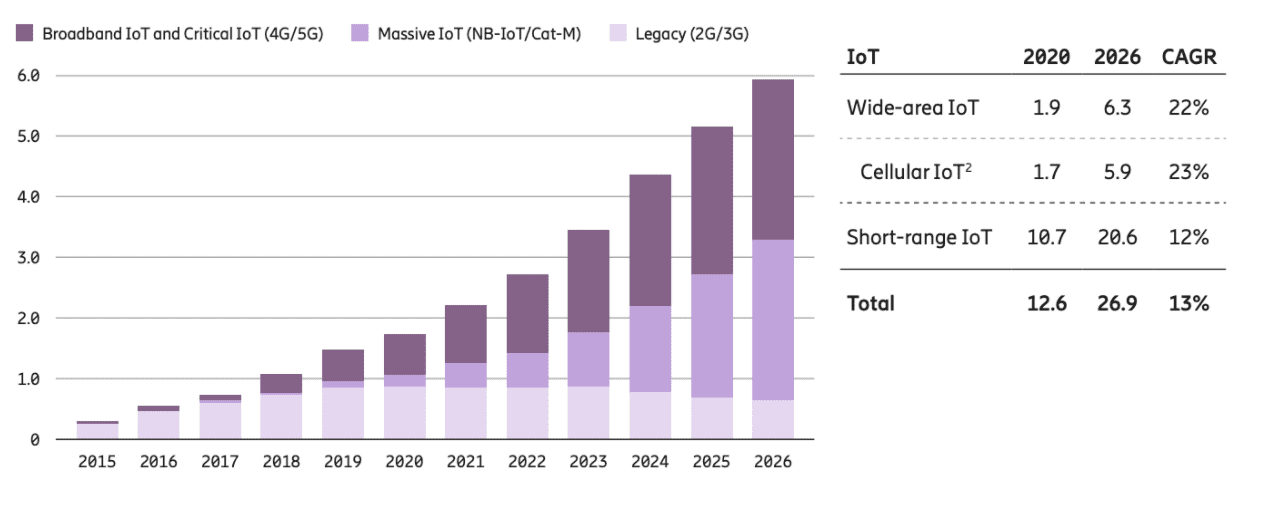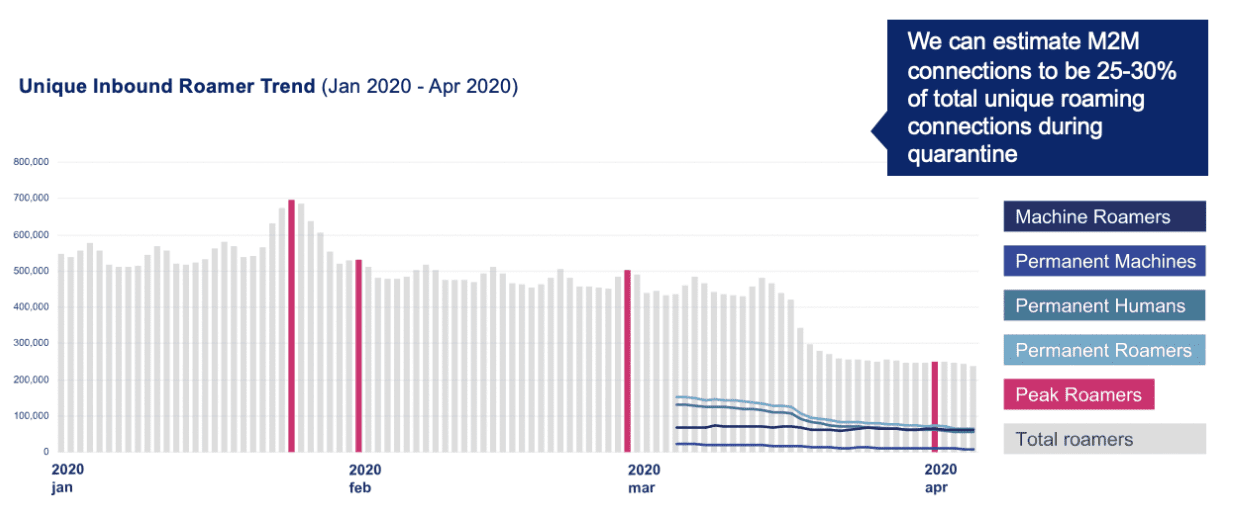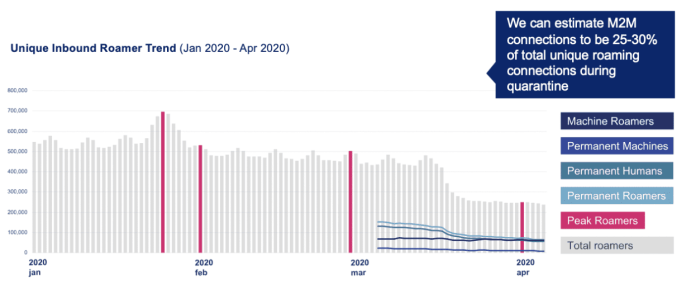BICS: “Using machine learning starts with the data”
The term “massive IoT” is tossed around as a key use case for 5G given that the latest generation of cellular is capable of supporting some 1 million devices per square kilometer, a substantial increase from its predecessor. And in terms of the value 5G can bring to enterprise, IoT is a key component of that story. The digitization of manufacturing or healthcare is largely about connecting machines, capturing and analyzing more data, and improving processes and finding new efficiencies. This massive amount of machine data requires machines to make sense of it—enter machine learning.
To put a number on it, Ericsson tracks IoT connections in its Ericsson Mobility Report, which considers three connection types: legacy connections using 2G and 3G; massive IoT using NB-IoT or Cat-M; and broadband IoT and critical IoT that depends on 4G and 5G networks for connectivity. In the November 2020 installment of the Ericsson Mobility Report, the Swedish firm tallied 12.6 billion IoT connections. By 2026 that figure is projected to more than double to 26.9 billion connections, a compound annual growth rate of 13%. IoT is a big tent and there are rooms for a huge variety of device types, both fixed and mobile, that have widely variable throughput, latency and reliability needs. Because of this trajectory and the value expected to be derived from IoT for enterprises, one fundamental question ML can help answer is is this connection a human or a machine?

BICS describes itself as a “leading international communications enabler” and provides a broad solution set including voice, data, messaging, fraud prevention, roaming and global IoT. Covering the latter two, Senior Product Manager of Mobile Signaling and Analytics Damion Rose explained, “We provide a solution to identify subscriptions and roaming as being either humans or machines.” This is key for proper network management today and will only increase in importance as the growth in device numbers and capacity demand continues to force operators to find efficiencies wherever possible.
Machine learning to help identify device type
Rose explained that BICS helps operators look at node-level behavior to determine the type of device that has connected to a network. “We expect machine-type communication to be a huge contributor to not just unique connections globally but also the revenues, the bottomline of telcos locally. Today however we have a big problem of understanding what is connected to my network,” in terms of the specific device but its needs, associated usage pattern, where it’s comig from, and performance level. “Today we don’t have that level of transparency. One of the key use cases we can do for automation is automatically detecting, for example, the presence of machines.”
“We can profile them based on usage to see how humans and machines may vary.” This serves two purposes. “There are functional needs that a customer has that are inherent to providing connectivity. Once you’re moving traffic for a customer, they want to see performance metrics. These are the obvious things. The non-obvious things are the value-add things. My customers are typically customers that understand that in reporting, particularly traffic reporting, you have a visibility island.”
In the case of roaming, where a person or machine hands over from its home network to that of a partner, Rose said the goal then becomes to expand visibility beyond the island. He explained that it’s necessary to maintain a clear view of quality of experience-related data as a device moves. BICS works with operators to let them “see beyond their network edge which is typically something that is not possible. The insights you get here are also important. I have these subscribers roaming out but how are they globally distributed, are they landing on the networks with the best quality, are they landing on the networks with the best cost, and what’s their data usage like? I want all the different quality indicators available to me to make sure my business is operating well but really the goal is to extend this visibility island. Our business is creating value on top of all this. Some of the ways we do that is to dig further into our data to understand even more.”
Analyzing network traffic for an Asian operator, Rose and his team found that between January and April 2020 some 25% to 30% of total unique roaming connections were machines “in a real way contributing to the bottomline. During COVID-19 it’s becoming more apparent that IoT global connectivity is a real thing. It’s really happening and it’s already a significant part of the roamer base.” Having identified the portion of machine roaming traffic, the next step was to optimize to meet the needs of those devices which are different classes of devices being used for different use cases, some with very low levels of usage and others that were data-hungry.

“Using machine learning starts with the data,” he said. “It’s about opening the book and seeing the different stories, then applying that to today’s problems to help solve those and actually make the most you can from the network and resources you have today.”

